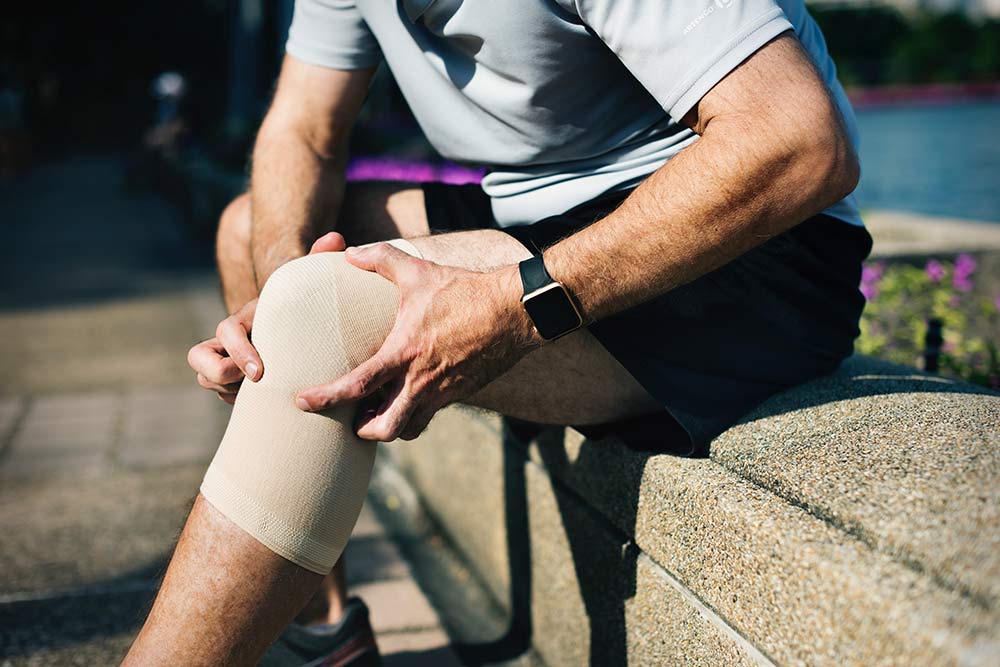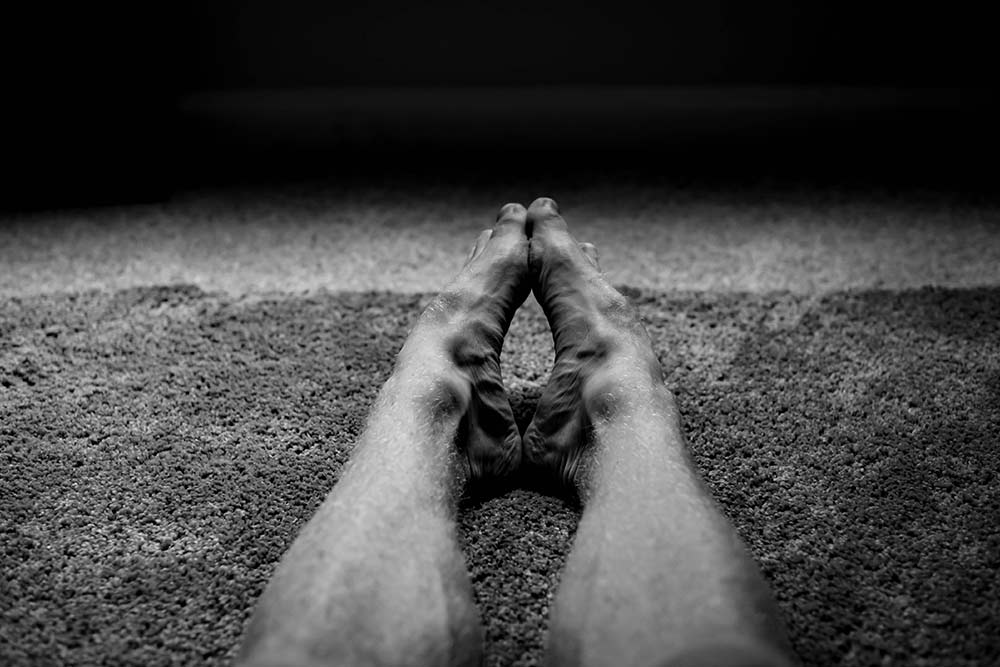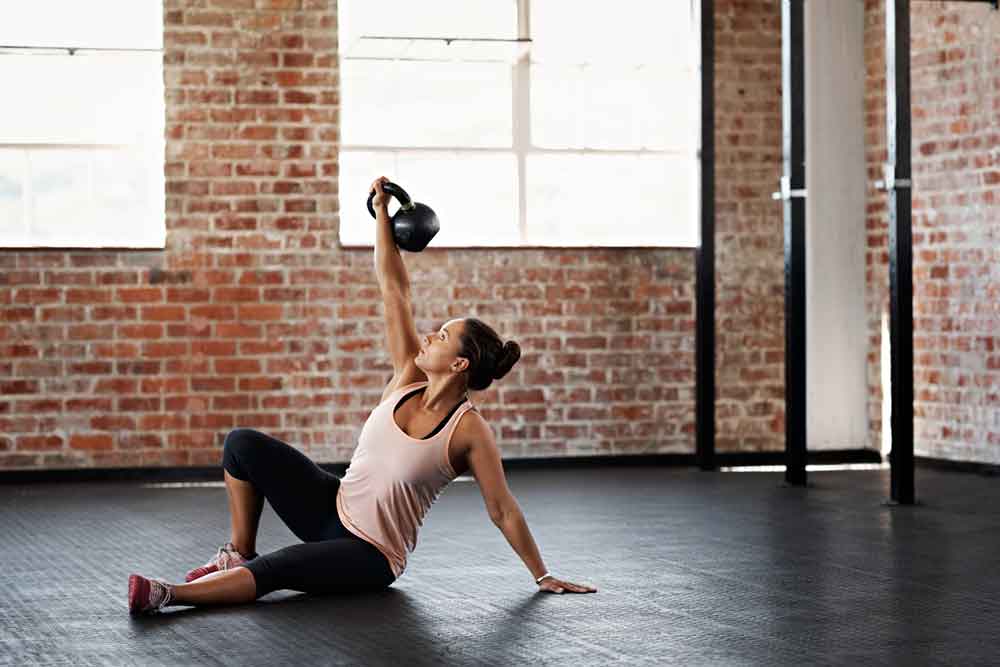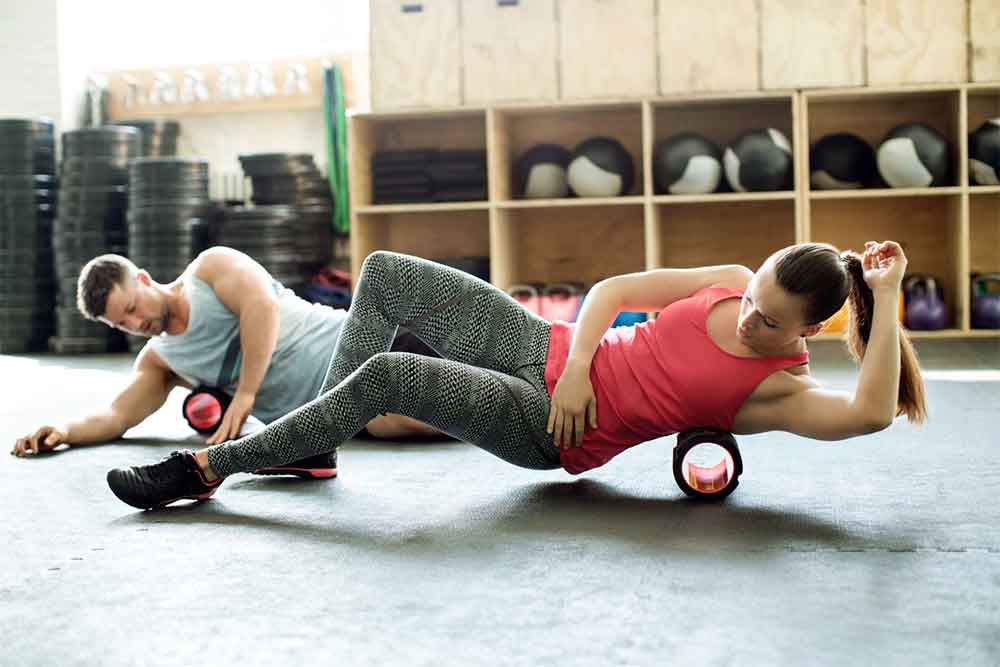Fascia Warm Up, Strength, & Stretch Plan
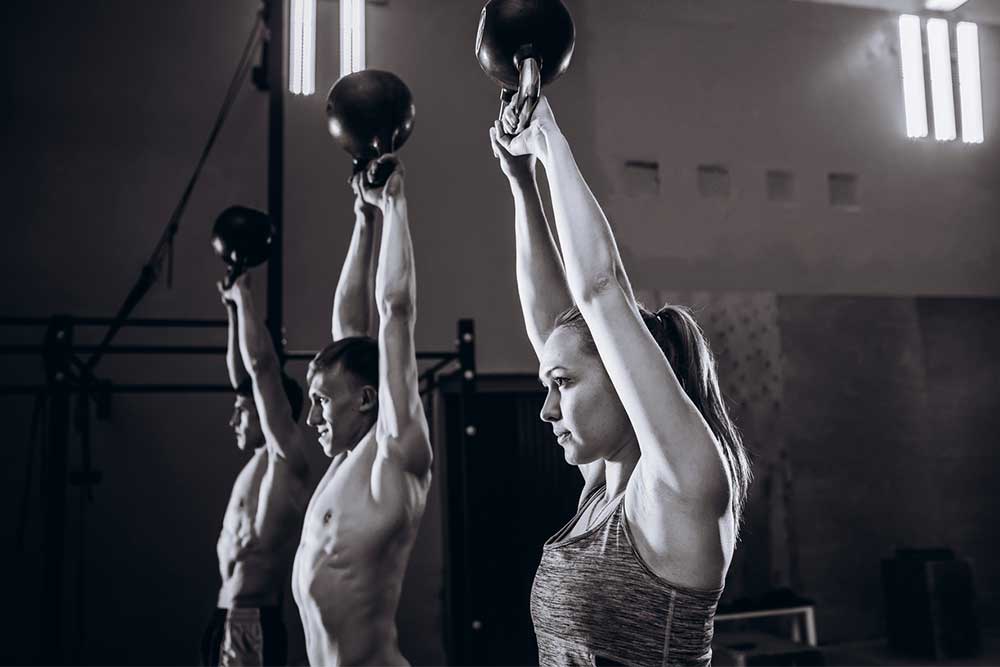
Ryan Cross, B.A. Hons (Kin), MScPT, FCAMPT
Registered Physiotherapist in Sarnia, Ontario, Canada
Last week we learned about what the fascia is and why it’s important. The fascia is difficult to study and understand; therefore it is sometimes overlooked when developing a training program. In order to target the fascia there are some principles to follow and minor tweaks to exercises that you might have done in the past. We will look at these principles and go over the exercises that you can incorporate into your training routine.
Breathing
The fascia connects all parts of the body and wraps around all organs. The lungs are a vital organ that are constantly working and need to adapt to the demands of our current activity. It is important to consider your breathing pattern during your training routine and incorporate deep breathing exercises on a daily basis.
Hydration
The health benefits of maintaining proper hydration are almost endless. To improve “fascial fitness” it is essential to stay hydrated. The fascia is a web that moves through the whole body. Water is present in all tissues and cells which allow fascia, muscles, and joints to move better. There is also an elastic component to fascia that requires hydration to function properly. Injuries tend to happen when tissues are stretched beyond what they are able to respond to. Decrease hydration, decrease the tissues stretch response, and increase the chance of injury.
Related Article: Hydration and Performance, Part 1: FLUIDS
Power Production
The elastic component of the fascia is important for tasks that require power production. Activities such as jumping, running, and throwing require a large amount of force in a short amount of time. The body can make use of its natural elastic recoil to increase power production and minimize energy consumption. Jumping and landing requires an acceleration and deceleration phase, which builds elasticity in the fascia. The wind up of a throw begins proximally and the distal components follow sequentially. This will build elasticity in the fascia and surrounding tissues. Training for these activities with plyometric exercises and high intensity interval training (HIIT) can help maximize the elastic component of the fascia.
Complex Movements
Complex movements that require the body to adapt and move in all directions will train the fascia. This is because the fascia responds better to variety and whole body movements. Repetitive movements will only work muscles in isolation and in one of its actions. Muscles usually have multiple actions and functions that can affect other areas of the body through fascial connections. Because of these widespread connections, whole body movements will target the fascia better than isolated movements. The fascia also is highly innervated by sensory nerve endings that will give the brain information on movement and the need for stabilizing (proprioception). Varying the work out and doing whole body movements improves these connections in the brain. Complex activities like rock climbing or parkour require stability, whole body movements, and the ability to adapt constantly.
With these principles in mind, a training routine can be adapted to have a focus on the fascia. Including a warm up before your workout routine can prepare the fascia for exercise and mobility. It can also help you feel the movements better because the fascia has an increased number of sensory nerve endings (proprioceptors). Using skin rolling techniques, lacrosse ball drills, or the foam roller can all improve the sense of mobility. General fascia stretching should also be included, along with deep breathing exercises. These all can be used as part of a cool down routine as well. The fascia can be trained for mobility and stability with stretching and strengthening exercises adapted to target the fascia.
Related Article: Improve Performance With Mobility Training
Warm up / Cool Down
The fascia can be found in all layers of tissues and around muscles. You can improve circulation and mobilize the fascia with skin rolling. Pinch the skin and underlying muscle between your finger tips and roll back and forth a few times. Move along the muscle, leg, or arm. This can prepare the tissues for flexibility and strength training.
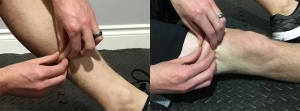
Muscles are surrounded by fascia to give them support and to connect different tissues. Manual therapy and soft tissue mobilizations can provide improved mobility because they address all layers of muscle and fascia. To perform self soft tissue mobilizations of the fascia use your hands, a lacrosse ball, or foam roller and apply pressure along the muscle as you move from a contracted position to a lengthened position.
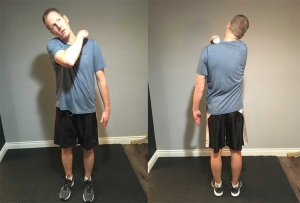
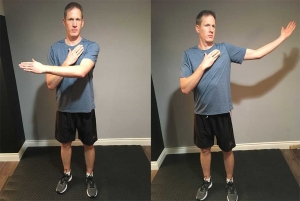

Stretching
To effectively stretch the fascia, it is important to have multiple joints moved into a stretched position. It is also important to breathe deeply and gently as you hold your stretches.
Anterior Fascia stretch. Lay on your stomach and propped up on elbow. Bend your knee all the way and hold with your arm. Hold the stretch while you gently breathe in through your nose and out through your mouth 5-10 times.
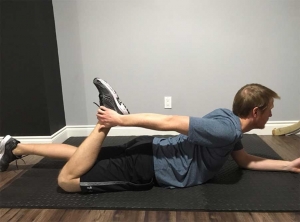
Lateral Fascia Stretch. Cross your foot behind the other. Reach up and lean over away from the side you are stretching. Hold the stretch while you gently breathe in through your nose and out through our mouth 5-10 times.
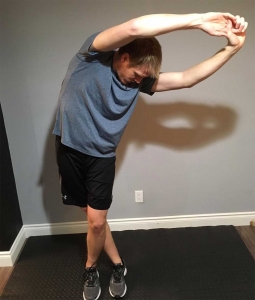
Posterior Fascia Stretch. Pull your knee to your chest and extending your leg as far as comfortable. Hold the stretch while you gently breathe in through your nose and out through your mouth 5-10 times.
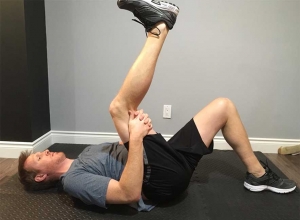
Posterior Hip Stretch. Lay on your back and crossing the leg over your body. Turn your upper body away from the crossed leg. You can use your hand to increase the stretch by adding over pressure on the knee. Hold the stretch while you gently breathe in through your nose and out through your mouth 5-10 times.
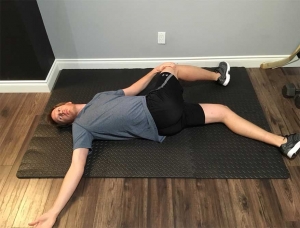
Related Article: 5 Creative Hip Strengthening Exercises
Strengthening
Strengthening exercises can help train the elastic component of the fascia. It also helps you improve power and explosiveness.
Jumping
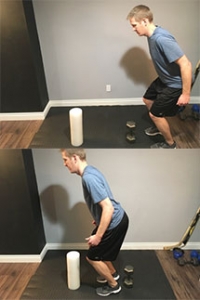
Kettlebell Swing
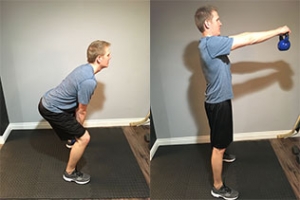
Whole Body Movements – Turkish Get up
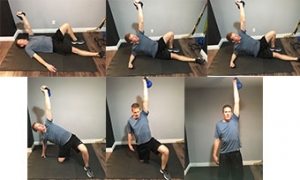
Diagonal Movement Patterns

Lunge with a Side Bend
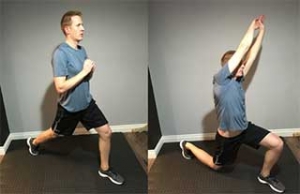
Modified Superman

Takeaway
The fascia is complex and underutilized part of our movement system. Understanding the principles that contribute to the health of the fascia can help you improve your training programs. There are some easy ways to implement exercises that have a focus on the fascia. There is still a lot to learn and understand about the fascia, but using the basics can take your work out to the next level.
Related Article: What Is Fascia And Why Does It Matter?
You Might Like:

